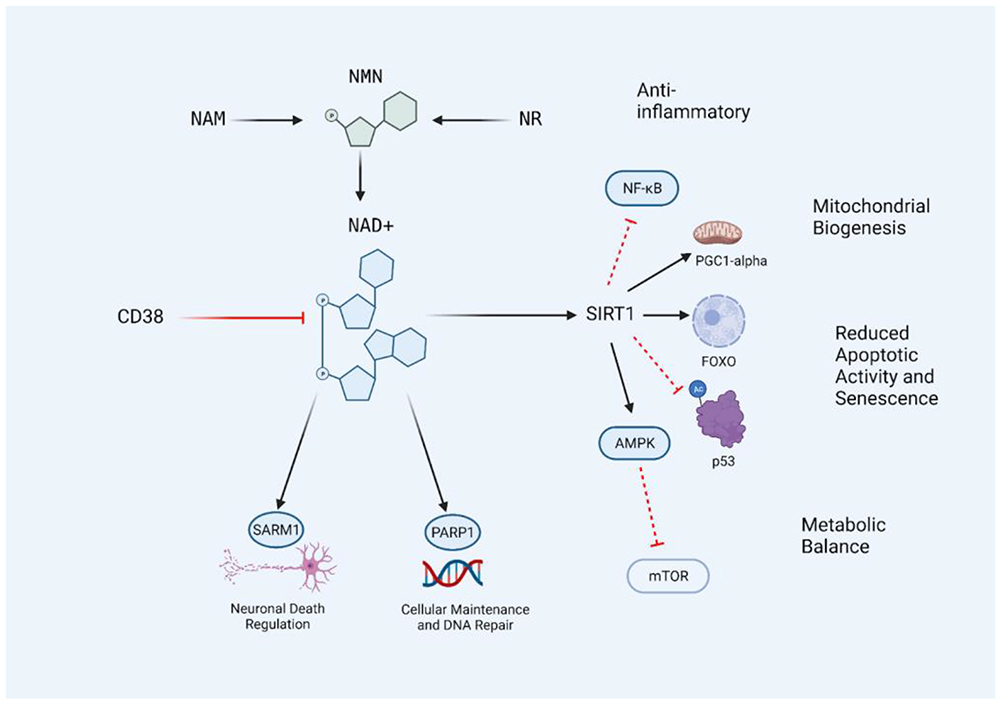
NAD+ injections are an advanced injectable therapy designed to deliver nicotinamide adenine dinucleotide, a vital coenzyme involved in energy production and cellular repair. They are used to support mitochondrial function and reduce oxidative stress, often helping patients feel more energized and restored.
These therapies are featured in medical aesthetics courses at HubMed Ed and the Regenerative Medicine Course, enabling clinicians to apply evidence-based protocols in aesthetic and longevity care. While the therapy is generally well tolerated, aesthetic professionals need to understand its safety profile and potential risks.
What NAD Injection Side Effects to Expect
NAD+ therapy, particularly through IV or subcutaneous injections, is generally well tolerated. However, patients may experience varying degrees of adverse effects depending on individual physiology and treatment protocols.
Understanding the full spectrum of NAD injection side effects ensures timely intervention and improved patient satisfaction. For clearer clinical communication, practitioners may refer to NAD+ injections before and after to support patient expectations.

Common Side Effects of NAD Injections
Most patients tolerate NAD+ injections well, but there are a few mild side effects that tend to appear more frequently. These typically occur during or shortly after the injection and are short-lived:
- Mild flushing or warmth, especially during IV infusion.
- Temporary nausea.
- Mild to moderate headaches.
- Tenderness or redness at the injection site.
- A sensation of pressure or tightness in the chest (transient).
Less Common but Possible Adverse Reactions
Some patients may report less common symptoms that are still generally self-limiting. These reactions are important to monitor, particularly in sensitive individuals or those receiving NAD+ for the first time:
- Dizziness or lightheadedness.
- Digestive discomfort, including bloating or cramping.
- Fatigue or mental fog.
- Mild muscle cramps.
- Sweating or chills.
Rare but Serious Risks to Watch For
Though very rare, some side effects require immediate clinical attention. These symptoms may signal a more serious underlying reaction to NAD+ injections:
- Allergic reaction (e.g., hives, facial swelling, difficulty breathing).
- Severe vein irritation or phlebitis from IV administration.
- Rapid heart rate or palpitations.
- Chest pain or persistent shortness of breath.
- Fainting or loss of consciousness.
Patient- and Treatment-Related Factors Affecting Risk
Side effect profiles can vary widely based on the patient’s health status and the specifics of the NAD+ injection protocol.
Patient-related factors such as age, baseline metabolic health, cardiovascular disease, and autoimmune status influence how the body reacts to injectable NAD. Those with underlying mitochondrial or enzymatic disorders may be more susceptible to adverse reactions due to impaired NAD metabolism.
Treatment-related factors, such as NAD+ injection dosage per day, infusion rate, and administration route (IV vs. subcutaneous), also affect tolerance. Rapid IV infusions are more likely to produce nausea or flushing, while slow titration protocols typically reduce discomfort.
Evidence-Based Strategies to Reduce NAD+ Adverse Reactions
Aesthetic and longevity practices have developed several strategies to reduce side effects and improve patient comfort:
- Start with gradual dose escalation to allow physiological adaptation.
- Use slow IV infusions over 2+ hours to minimize flushing and nausea.
- Ensure patients are well hydrated before and after administration.
- Combine NAD+ therapy with antioxidants or mitochondrial support agents for improved tolerance.
- Provide detailed counseling on expected sensations and reassure patients about mild transient reactions.

Monitoring Parameters and Safety Measures
Clinical safety should be at the forefront of every NAD+ injection protocol. The following points outline best practices to monitor and protect patient health throughout treatment:
- Screen patients for cardiovascular conditions, metabolic disorders, and allergies before initiating therapy.
- Monitor vital signs during the procedure, including blood pressure, heart rate, and respiratory rate.
- Ask patients to report subjective symptoms such as dizziness, warmth, or chest tightness during administration.
- Assess the IV site for signs of irritation or inflammation, particularly with repeated infusions.
- Use slower infusion rates to reduce physiological stress and improve tolerance.
- For high-risk or complex patients, consider lab marker tracking such as NAD+/NADH ratio, glutathione, or oxidative stress panels to guide therapy and safety.
Contraindications That Cause Side Effects for NAD Patients
NAD+ injections should be avoided or approached with caution in patients with the following conditions, as these can increase the risk of complications or intensify side effects:
- Uncontrolled hypertension: Elevated blood pressure may worsen with NAD+ therapy due to increased cellular activity and sympathetic nervous system stimulation.
- Congestive heart failure (CHF): NAD+ infusions may contribute to fluid overload or cardiac strain in patients with compromised heart function.
- Severe liver or kidney disease: Impaired detoxification or renal clearance can lead to inefficient metabolism of NAD+, causing unpredictable systemic effects.
- Active infections: NAD+ may enhance immune activity and oxidative stress, potentially worsening systemic infections or prolonging recovery.
- Pregnancy and breastfeeding: There is insufficient safety data on NAD+ use during pregnancy or lactation; thus, therapy is not recommended in these populations.
- Concurrent use of metabolism-altering medications: Patients on drugs that affect mitochondrial function (e.g., certain antidiabetics, statins, or chemotherapy agents) may experience adverse interactions with NAD+.
Proper screening and physician oversight are essential before offering NAD+ injections to any patient with these contraindications.
Clinical Indicators for Urgent Medical Review
While most side effects are mild, certain symptoms demand immediate intervention. Signs such as acute shortness of breath, persistent chest pain, facial swelling, rapid-onset rash, or loss of consciousness suggest an allergic or cardiovascular event.
These symptoms distinguish true medical emergencies from normal, expected side effects like flushing or fatigue. Practices should maintain resuscitation equipment and establish a clear escalation protocol to refer patients to emergency care when required.
Duration and Resolution of NAD+ Injections Side Effects
The typical NAD injection side effects resolve quickly with supportive care and dose adjustment. Mild symptoms like warmth, flushing, or headache may fade within one to three hours post-injection.
For IV infusions, these symptoms often occur during the drip and resolve shortly after completion. When symptoms persist for more than 24-48 hours, consider dose modification or reevaluation of patient eligibility. With proper administration and follow-up, most patients experience minimal to no prolonged discomfort during NAD+ post-procedure recovery.

Interaction of NAD+ Therapy with Other Treatments
Understanding how NAD+ interacts with other therapies is essential for safe integration into broader aesthetic or regenerative protocols. The following considerations can help clinicians minimize risk:
- Combination with metabolic therapies: NAD+ should be used cautiously alongside agents like glutathione or alpha-lipoic acid, as overlapping metabolic stimulation can lead to exaggerated effects or patient discomfort.
- Concurrent medication use: Patients on medications that influence mitochondrial or oxidative function, such as metformin, statins, or certain antidiabetics, may respond unpredictably when NAD+ is added.
- Spacing IV therapies: Co-administered IV treatments that affect vascular tone or redox balance should not be administered in the same session without close monitoring.
- Pairing with aesthetic procedures: Avoid combining NAD+ with aggressive in-office procedures such as PRP, microneedling, or radiofrequency treatments in the same visit, unless there is a clinical rationale and proper spacing protocol.
- Interaction awareness during protocol design: Incorporate NAD+ into treatment plans only after evaluating timing, dosage, and synergy with the patient’s full regimen.
Final Word
As injectable NAD continues to integrate into aesthetic and regenerative protocols, understanding its safety profile is critical. By anticipating side effects, individualizing protocols, and applying evidence-based risk mitigation strategies, practitioners can deliver safe, effective, and satisfying NAD+ therapy in aesthetic medicine.
To master the delivery and safety of aesthetic protocols, explore the HubMed Ed learning platform and its wide range of VOD aesthetic training courses and live masterclasses tailored to medical professionals.
FAQs
What happens to your body when you take NAD?
NAD helps fuel mitochondrial energy production, enhances DNA repair, and supports cellular detoxification. Patients often report increased energy and focus after treatment.
Who should not take NAD?
Patients with uncontrolled heart conditions, severe kidney or liver dysfunction, or those who are pregnant or breastfeeding should avoid NAD injections. Pre-screening is critical to identify risks.
How do you feel after the first NAD injection?
Most patients feel relaxed or energized, but some may experience mild flushing, headache, or nausea. These effects are usually short-lived and resolve quickly.
Does NAD cause weight gain?
No, NAD injections are not associated with weight gain. Some patients report improved metabolism or appetite regulation.
Do NAD injections make you look younger?
While NAD+ does not directly alter appearance like dermal fillers, its role in cellular repair and oxidative stress reduction may enhance skin glow and tissue vitality over time.
What happens when you stop taking NAD?
Once NAD injections are stopped, the benefits may gradually taper off. There are no known withdrawal symptoms, but cellular energy levels may return to baseline.
References:
- Gindri IM, Ferrari G, Pinto LPS, Bicca J, Santos IKD, Dallacosta D, Roesler CRDM. Evaluation of safety and effectiveness of NAD in different clinical conditions: a systematic review. Am J Physiol Endocrinol Metab. 2024;326(4):E417-E427. doi:10.1152/ajpendo.00242.2023. https://pubmed.ncbi.nlm.nih.gov/37971292/
- Gindri IM, Ferrari G, Pinto LPS, Bicca J, Santos IKD, Dallacosta D, Roesler CRDM. Evaluation of safety and effectiveness of NAD in different clinical conditions: a systematic review. Am J Physiol Endocrinol Metab. 2024;326(4):E417-E427. Published March 12, 2024. doi:10.1152/ajpendo.00242.2023. https://journals.physiology.org/doi/full/10.1152/ajpendo.00242.2023
- Poljšak B, Kovač V, Milisav I. Current uncertainties and future challenges regarding NAD⁺ boosting strategies. Antioxidants. 2022;11(9):1637. Published August 24, 2022. doi:10.3390/antiox11091637. https://www.mdpi.com/2076-3921/11/9/1637
Disclaimer:
This article is intended for licensed medical professionals. All protocols, dosages, and treatment insights referenced herein are based on published literature. The content is not intended to encourage application, diagnosis, or self-treatment of unlicensed individuals, and should not be used as a substitute for the clinical judgment of a qualified healthcare provider.

